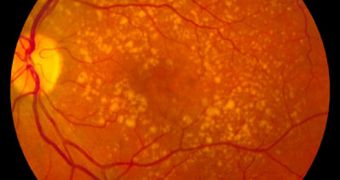A team of investigators from the United States announces the discovery of a new molecular mechanism in the human eye, that apparently plays an important role in the development of geographic atrophy.
This condition is one of the major causes driving the rate of untreatable blindness cases up in the industrialized world. As such, the new discovery has the potential to affect millions.
This is additionally confirmed by the fact that the research team that made the discovery also developed two new ways of addressing the condition, and preventing it from taking a turn for the worse.
Furthermore, the scientists behind the new work were able to determine that a large section of the human genome that had been classified as “junk DNA” is in fact very active in causing diseases.
This is the first study to expand on this issue, and to tie it with a disease of the eye. Details of the new work appear in a paper entitled “DICER1 Deficit Induces Alu RNA Toxicity in Age-Related Macular Degeneration.”
The research team that made the discoveries was led by ophthalmologist Dr. Jayakrishna Ambati, from the University of Kentucky, Science Blog reports. The work he and his team did is detailed in the February 6 issue of the esteemed scientific journal Nature.
Ambati explains that geographic atrophy is a condition in which cells in the retina simply die off. The disease occurs in the latest stages of dry-type macular degeneration, an eye disease affecting 10 million people in the United States alone.
Statistics show that 1 in 10 individuals who develop the condition will go completely blind at some point. The thing about geographic atrophy is that there's currently no cure for it, as no clear cause for the condition was ever established.
“We discovered that in patients with geographic atrophy, there is a dramatic reduction of the Dicer enzyme in the retina,” Ambati explains.
“When the levels of Dicer decline, the control system is short-circuited and too much Alu RNA accumulates. This leads to death of the retina,” he goes on to say.
The expert is a professor and vice chair of the Department of Ophthalmology and Visual Sciences at the UK College of Medicine. He is also the Dr. E. Vernon and Eloise C. Smith Endowed Chair in Macular Degeneration Research at the university.

 14 DAY TRIAL //
14 DAY TRIAL //